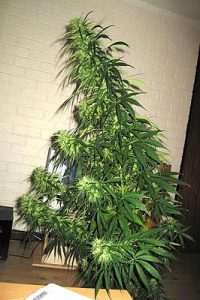I’m all for legalization of marijuana and may have to move back to Canada because it’s legal for recreational use in the entire country.
 Just kidding, I’m spoiled and couldn’t stand the snow; I like going to the ice hockey arena in flip-flops and shorts, like they do in Tampa.
Just kidding, I’m spoiled and couldn’t stand the snow; I like going to the ice hockey arena in flip-flops and shorts, like they do in Tampa.
But there are downsides to legalization.
Parents wouldn’t pack their kids’ lunches with whiskey and smokes, so why would a mom send pot-laced gummies in her’ kid’s lunch?
Probably forgot. I hear weed does that.
Jeff Truesdell of People reports an Ohio mom was arrested on child endangerment charges after her 9-year-old son brought marijuana-laced gummy bears from home to his elementary school, prompting alarm after 14 students who ate them became sick.
Cleveland police confirmed the arrest of the 27-year-old woman, whose name is being withheld by PEOPLE due to the nature of the charge against her.
The report of ill children brought officers and EMS workers to Anton Grdina School about 1:45 p.m. Monday. “Some of the students were complaining of upset stomachs but had no other signs of impairment,” a police report states.
 “As a precaution today, we called EMS to examine several students to determine whether gummy bears shared with them by other students during lunch may have been marijuana-laced,” the school’s principal, Latosha Glass, said in a statement, reports News 5 Cleveland. “This precaution was taken because the packaging of the candy was not recognizable to us and appeared suspicious.”
“As a precaution today, we called EMS to examine several students to determine whether gummy bears shared with them by other students during lunch may have been marijuana-laced,” the school’s principal, Latosha Glass, said in a statement, reports News 5 Cleveland. “This precaution was taken because the packaging of the candy was not recognizable to us and appeared suspicious.”
The 9-year-old said his mom and aunt had thrown a party at their apartment on Sunday, where he said the gummies were given to him and other children by his aunt, who “had gotten drunk” and “was not in her right mind,” according to the police report.
After the boy was told to go to bed, his mother allegedly put the gummies on a table and told him not to touch them. But another child urged the boy to follow his mother into the kitchen and say he loved her, so the second child could take them, according to the report.
The children carried the gummies in their book bags to school on Monday. A school staff member cleaning up a room later found a zip-lock bag printed with wording that indicated the contents contained drugs. An EMS worker reported recovering the bag still containing three gummy bears and a plastic bottle containing several gummy worms and gummy bears.
Staff members at the school reviewed video footage to identify kids who were present when the gummies allegedly were handed out.
Those taken by EMS workers to a hospital for evaluation included four 5-year-olds, three 6-year-olds, one 8-year-old and the 9-year-old. The parents of five other students declined the EMS transport.







 worried mother, along with a piece of the "leafy" bar.
worried mother, along with a piece of the "leafy" bar. there is no better way to deworm the birds. He said was advised to do so, but would not name the specialist who gave the advice.
there is no better way to deworm the birds. He said was advised to do so, but would not name the specialist who gave the advice.
 Technically, the Ganja Gourmet is a medical marijuana dispensary, one of many that have sprung up this year throughout Colorado.
Technically, the Ganja Gourmet is a medical marijuana dispensary, one of many that have sprung up this year throughout Colorado.